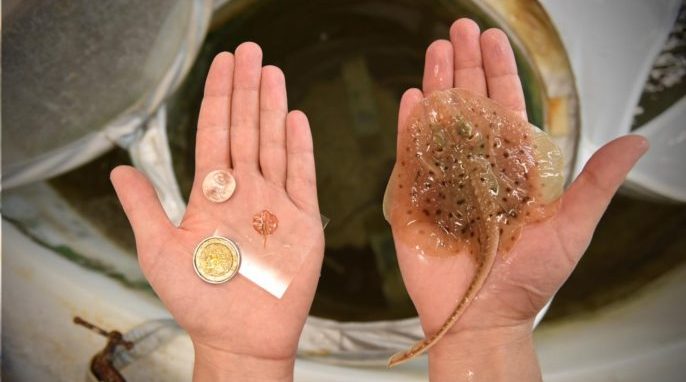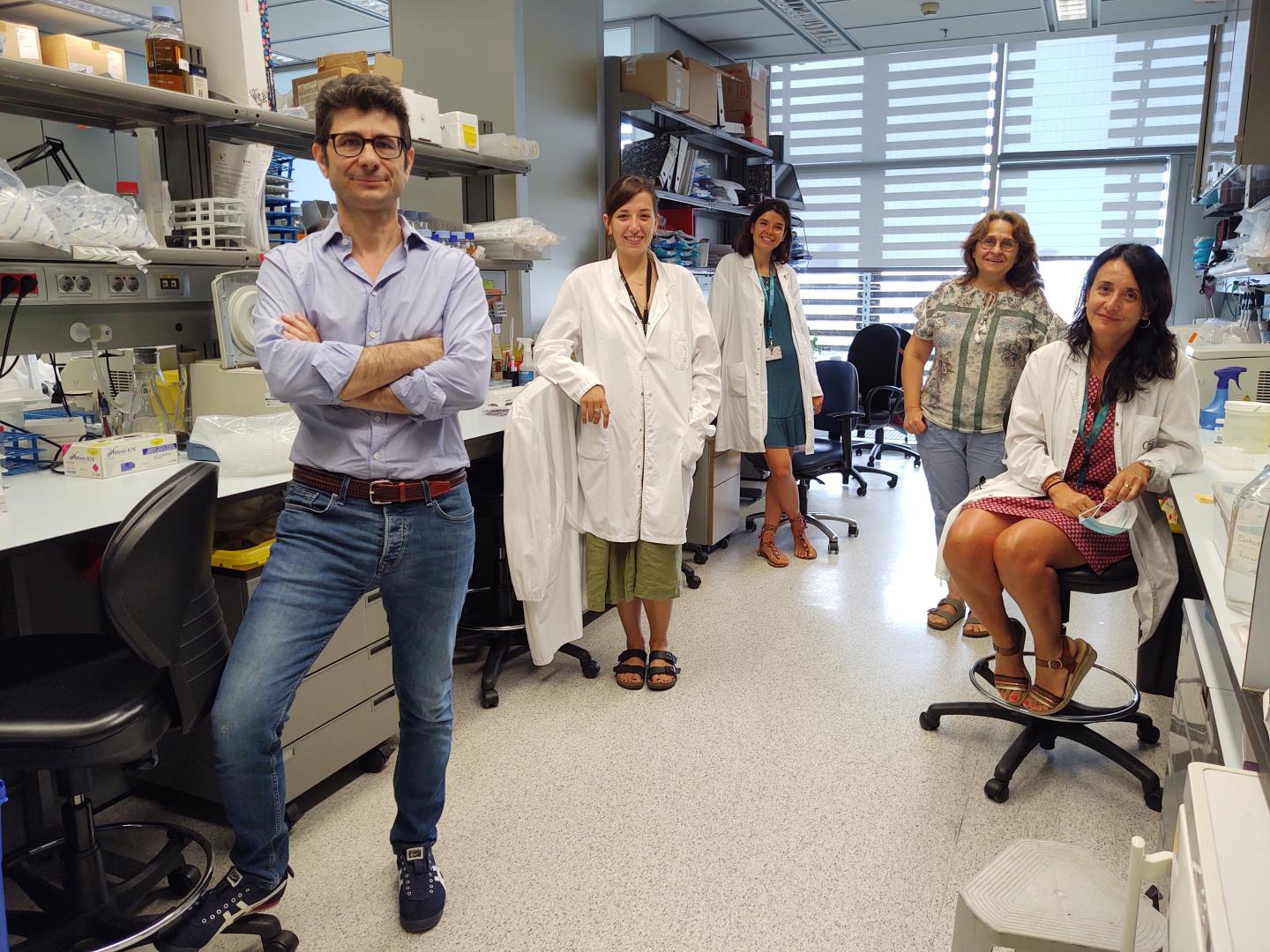Cancer treatment scientists have developed an add-on therapy that could help patients’ own immune systems tackle resilient cancers.
Cancer can be many things—debilitating, frustrating, traumatic—and at its worst, stubborn. It can sometimes relapse years after initial treatment and require multiple rounds of therapy. For example, 16 percent of patients who achieved remission from multiple myeloma (a form of cancer in plasma cells, a type of white blood cell) experience relapse within a year.
Innovative cancer treatments are now available for some patients who don’t respond well to typical therapies. These include CAR T-cell therapy. This uses your body’s own immune cells to target and kill diseased cells. But even these flashy new cancer treatments aren’t bulletproof. In fact, about 24 percent of patients with multiple myeloma who receive CAR T treatment go on to relapse. What happens then?
Luckily, oncology researchers aren’t giving up. Now, Taha Rakhshandehroo and colleagues from the Dana-Farber Cancer Institute in Boston have described a new strategy to improve CAR T-cell therapy. They’ve developed a molecule which they call a CAR enhancer, or “CAR-E.” CAR-E helps cancer-killing immune cells last longer in the body and bounce back should the cancer return.
How is cancer treated?
Frontline cancer treatments are well-known: surgery, chemotherapy, and radiation therapy. Surgery removes cancerous cells from the body directly. It’s difficult to remove all cancer cells once the cancer has spread throughout the body (a.k.a. “metastasized”). This leaves room for any surviving cancer cells to rally back, causing relapse.
Chemotherapy and radiation therapy use chemicals and radiation, respectively, to try to kill off cancerous cells. However, these techniques also kill non-cancerous cells. So, they have to be carefully targeted to avoid damaging healthy tissue.
In contrast, immunotherapy helps patients’ own immune systems fight off cancer cells. These are more targeted attacks, as some immune cells can distinguish cancerous cells from healthy ones, helping root out cancer throughout the body.
RELATED: Killing Cancer From the Inside
What is CAR T-cell therapy?
One form of immunotherapy is called CAR T-cell therapy. This strategy uses a modified form of T cell: a type of white blood cell. T cells recognize diseased cells (including cancer cells) by binding certain molecules on the surface of those cells, called antigens.
Some T cells—aptly named killer T cells—can kill diseased cells after recognizing them. Others called memory T cells act like sleeper agents. They enter an inactive state and wait to be reactivated months or years in the future, should the same antigen be encountered again.
CAR T-cell therapy aims to help T cells better recognize cancer cells. To do so, T cells are first taken from a cancer patient. Then, in a laboratory, they’re engineered to display a certain molecule on their surface, called a chimeric antigen receptor (CAR). This CAR recognizes and binds a new antigen, and can be engineered to recognize any antigen on cancer cells. The modified T cells (now called CAR T cells) are returned to the patient, where they’ll now target and kill any cells with that antigen.
Since this procedure is individualized per patient, it’s very expensive. For this reason and others, CAR T is usually a last-ditch cancer treatment, only used when several, more conventional therapies fail.
However, the ability of T cells to kill diseased cells can fade, which is known as T-cell exhaustion. CAR T cells might also fail to divide quickly enough, gradually dying off and limiting cancer treatment. Both leave patients vulnerable to relapse.
Some strategies have already been proposed to extend CAR T-cell activity, including further modifying their DNA. But the strategy proposed by researchers at the Dana-Farber Cancer Institute works differently; it instead uses a “helper” molecule to boost CAR T-cell growth and function.
CAR-E: a rallying cry for CAR Ts
So, what is this miracle molecule? Its design hinges on another, natural molecule called interleukin-2 (IL-2). Interleukins—and other cytokines—are molecules that control your immune response in response to infection or disease. They do this by controlling the activity and growth of immune cells. Specifically, IL-2 activates T cells, priming them to attack cancer cells.
RELATED: Using the Immune System to Treat Cancer
In their study, Rakhshandehroo’s team wanted to extend the function of CAR T cells directed against an antigen called BCMA, which is present on cancerous white blood cells. They created a hybrid molecule made of IL-2 fused to a piece of the BCMA molecule. That way, the CAR T cells would recognize the BCMA fragment, bind to it, and have IL-2 delivered right to their doorstep.
This CAR-E hybrid molecule bound CAR T cells with ease, but bound poorly to unmodified T cells, showing that the BCMA antigen directed the IL-2 to the CAR T cells as intended.
Testing the CAR-E cancer treatment
To assess their longevity in living animals, CAR T cells were injected into mice with multiple myeloma. The researchers saw that after a month, many more CAR T cells remained in the spleen and bone marrow of mice also exposed to the CAR-E than in mice who were not. So, CAR-E helped CAR T-cell populations grow and persist over time.
What does this mean for cancer treatment? When quantifying the remaining cancerous cells, Rakhshandehroo’s team found that all 22 mice given both CAR T cells and the CAR-E agent fully cleared tumor cells from the spleen, bone marrow, and liver. Only 6 of 12 mice from a control group did the same. So, CAR-E roughly doubled the efficacy of CAR T cells in achieving remission.
Notably, CAR-E treatment also made memory CAR T cells. These would be able to recognize the antigen if the cancer returned. In fact, when 5 mice already treated by CAR T cells + CAR-E were injected with new cancerous cells after 3 months, 4 of them had no tumor growth, whereas 3 of 3 control mice did. These results suggest that CAR-E could be a promising add-on therapy to lengthen CAR T-cell function and prevent cancer relapse.
A new hope for cancer treatment
Incomplete remission and relapse are threats for all cancer patients. For some, effective treatment options are few and far between. High-tech treatments like CAR T cells form a last line of defense. The CAR-E system promises to boost CAR T-cell therapy, helping these engineered cancer-fighting cells last longer in the body.
It will take much more work to bring this treatment to hospitals. But it could easily be added on to current CAR T treatments and wouldn’t require more personalized cell engineering.
RELATED: How Databases Signal Successful Immunotherapy
Importantly, CAR-E has a short half-life in the body; it’s quickly broken down and removed. This is important, because it’s possible to have too much of a good thing; prolonged exposure to IL-2 eventually causes T-cell exhaustion. T cells may even die in the presence of too much IL-2. But a single CAR-E injection gives just a brief “pep talk” to the CAR T cells, without driving them to the point of exhaustion. And the frequency of CAR-E injection can be modified, until the level of stimulation is just right.
However, CAR-E won’t overcome all the limitations of CAR T cells. This therapy is currently used for “liquid cancers”: cancer that exists in body fluids like blood. But it’s not as effective in treating “solid cancers,” which create solid tumors in the body. The reasons why are complex. It seems that various signaling molecules and regulatory immune cells that collect around a tumor act to shut down T-cell activity.
Also, though T-cell engineering improves their targeting to cancer cells, this targeting still isn’t perfect. Sometimes cancer cells lacking the target antigen are missed, known as antigen escape. So, the selection of antigen to target is critical to success.
Researchers are working constantly to advance CAR T-cell technology and overcome these problems. But for now, CAR-E may offer a valuable leg up in the fight against cancer.
This study was published in the peer-reviewed journal Nature Biotechnology.
References
Bachmann, M. F., & Oxenius, A. (2007). Interleukin 2: from immunostimulation to immunoregulation and back again. EMBO reports, 8(12), 1142–1148. DOI: 10.1038/sj.embor.7401099
Gagelmann, N., Dima, D., Merz, M., et al. (2024). Development and validation of a prediction model of outcome after B-cell maturation antigen-directed chimeric antigen receptor T-cell therapy in relapsed/refractory multiple myeloma. Journal of Clinical Oncology, 42(14), 1665–1675. DOI: 10.1200/JCO.23.02232
Majithia, N., Rajkumar, S. V., Lacy, M. Q., et al. (2016). Early relapse following initial therapy for multiple myeloma predicts poor outcomes in the era of novel agents. Leukemia, 30(11), 2208–2213. DOI: 10.1038/leu.2016.147
National Cancer Institute. (2019, July 18). Improving cancer immunotherapy: Overcoming the problem of ‘exhausted’ T cells. https://www.cancer.gov/news-events/cancer-currents-blog/2019/t-cell-exhaustion-immunotherapy
National Cancer Institute. (2022, March 10). CAR T cells: Engineering patients’ immune cells to treat their cancers. https://www.cancer.gov/about-cancer/treatment/research/car-t-cells
Rakhshandehroo, T., Mantri, S. R., Moravej, H., et al. (2024). A CAR enhancer increases the activity and persistence of CAR T cells. Nature Biotechnology, 1–12. DOI: 10.1038/s41587-024-02339-4
Sterner, R. C., & Sterner, R. M. (2021). CAR-T cell therapy: current limitations and potential strategies. Blood Cancer Journal, 11, 69. DOI: 10.1038/s41408-021-00459-7

About the Author
Rebecca DeGiosio is a postdoctoral fellow at the Children’s Hospital of Philadelphia, researching gene therapy approaches to treat rare lysosomal storage disorders. Rebecca has a passion for translational biological research, particularly on psychiatric and neurodevelopmental disorders, and for making this research accessible to the public. Find her on LinkedIn: https://www.linkedin.com/in/rebecca-degiosio/




